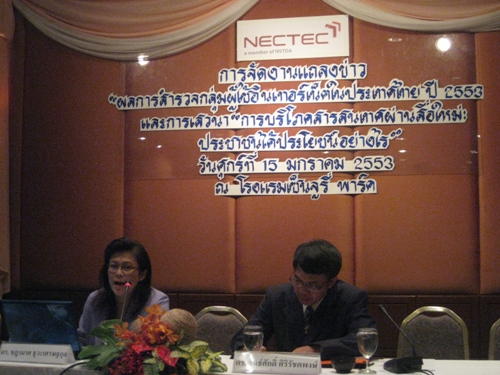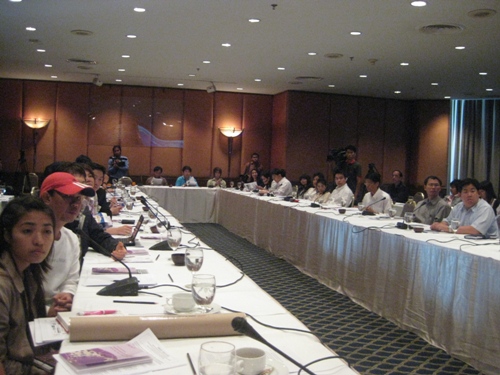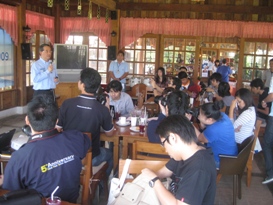Top property firm builds social networks
Sansiri looks for customers on Facebook, Twitter
Leading Thai property developer Sansiri has turned to the extraordinarily popular social-networking sites Facebook and Twitter to strengthen its marketing allure.
The company has “jumped on to the bandwagon of social networking” in the hope of increasing its marketing tools and becoming a “virtual friend” to its customers by remaining in touch on the social networks.
Sansiri’s assistant vice president for marketing Samatcha Promsiri said the company believed social networking was a vital marketing tool to maintain a good relationship with its customers and to roll-out its campaigns and promotions in real time.
It has set up Facebook.com/sansiri in the role of a customer-relationship management department and has created its own community comprised of existing customers. It is able to communicate with its community directly and receive quick responses.
Samatcha said the beauty of Facebook.com was its verification of users so the company knew who were and were not its existing customers. New target customers were created among friends attached to the networks of the company’s existing customers.
“For example, we put photos of our activities onto Facebook.com and our fans come and tag their photos as well as sending and sharing them with members of their network. Our customer-relationship management activities can promptly spread to a mass of people, as viral marketing. The things we do expand our customer relationship management to give it a wider presence in the online world,” he said.
Moreover, Sansiri aims to use Facebook.com as a bridge to bring its social-networking community back to its main online market community – www.sansiri.com – where detailed information on all its products and services, as well as latest promotions, are available.
Sansiri is also using Twitter.com as a viral marketing tool to deliver real-time marketing messages to potential customers.
Samatcha said that with a limit of 140 characters, Twitter.com/sansiri also aimed to attract people to the company’s main website.
“At Twitter, we can send messages with a harder marketing purpose than those on Facebook, where we must maintain the attitude of friendship, talking with people in friendly tones in a conversational fashion, rather than delivering hard-sell,” he said.
Sansiri learned a quick lesson when it launched its Facebook site with a hard-sell message seeking to directly attach its community. It failed, and the company later realised it was probably seen as broaching an unfriendly relationship.
“We learnt from direct experience that in a social network, people are not willing to accept direct-marketing messages. Instead, they like to communicate in friendly tones, like they are talking with their friends. Therefore, we have to be their friends,” Samatcha said.
He said social networking allowed Sansiri to communicate directly with both existing and prospective customers, and to get their responses and feedback very quickly, with the least cost and resources. Sansiri has a staff of just two people dedicated to its social marketing and gives the effort a very small budget.
Samatcha said that successfully developing social-network marketing was not about spending money, but about understanding human relationships.
As well as its social networking, Sansiri is spending about Bt600 million per year on online marketing. However, this is only 3 per cent of its total marketing budget of Bt1.8 billion per year.
Samatcha said the company’s next step was a plan to expand its online marketing on to Youtube.com. It plans to launch video clips related to Sansiri’s projects, such as recommended restaurants around Sansiri’s development locations, as well as other places of interest.
“For the moment, we will focus on these three channels of social networking,” Samatcha said. “We think there are many things we can develop on these platforms to optimise their ability to create value for both us and our customers.”
(Published in The Nation Newspaper, Byteline Section, October 20, 2009)
View :2193








Recent Comments